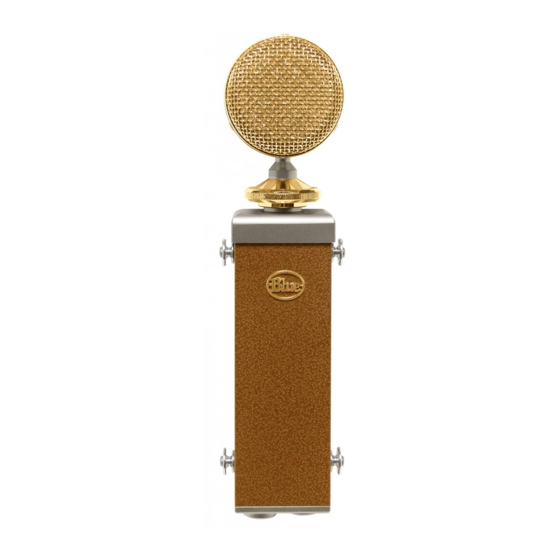Table of Contents
Advertisement
Quick Links
Advertisement
Table of Contents

Summary of Contents for Blue Cactus
- Page 1 Cactus Cactus...
- Page 2 But this is also a Cactus you’ll definitely want to get close to! With its detailed highs,...
- Page 3 For mounting the microphone on a stand, a recessed, threaded socket is built into the bottom of the Cactus, next to the multi-pin output jack. The Series One cradle and adjustable yoke mount...
- Page 4 Cactus B7 Capsule Frequency Response Frequency (Hz) This frequency chart of the Cactus B7 capsule is only a start. It gives the recordist a basis of the sound provided. How the microphone reacts in a particular application will differ greatly because of many variables. Room acoustics, distance from sound source (proximity), tuning of the instrument and microphone cabling are only a few of the interacting issues.
- Page 5 Saxophones and Reeds The smooth high end response and large diaphragm warmth of the Cactus B7 capsule makes it an ideal candidate for miking saxophones and other reed instruments. For soprano sax, clarinet and related instruments, position the mic about a foot away, directly above and in front of the keys between the middle of the horn and the lowest pads.
- Page 6 The tube used in the Cactus is a single subminiature pentode in a triode mode. After being burned in for a week, this tube is hand- selected by BLUE personnel for optimum low-noise performance.
















Need help?
Do you have a question about the Cactus and is the answer not in the manual?
Questions and answers